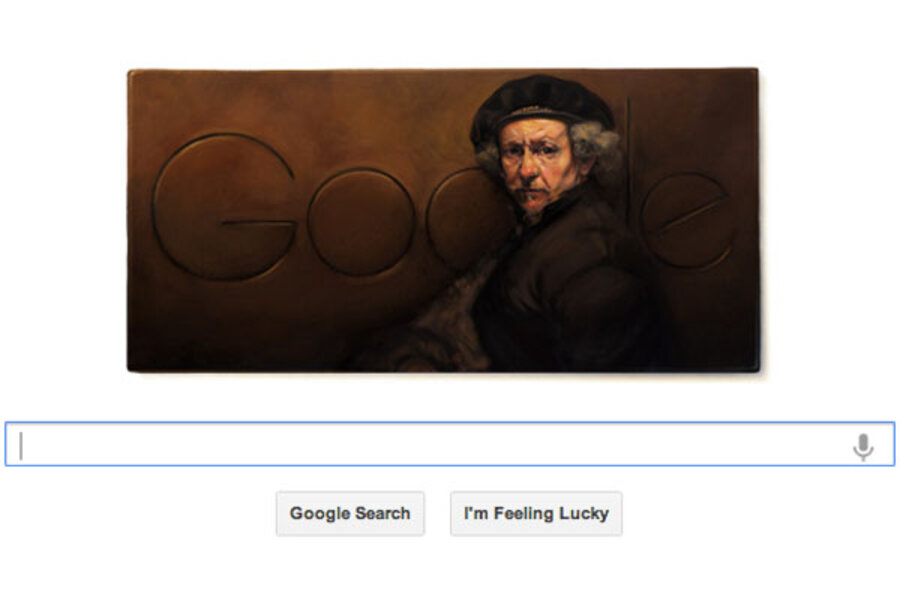Rembrandt van Rijn: The story behind the Google Doodle
Two dark eyes peer out from delicately furrowed eyebrows, meeting the viewer’s gaze. Tufts of gray hair, subdued under a large cap, frame the face. Dashes of rouge on the man’s cheeks, chin, and nose provide the only hint of a bright color in the painting.
The face is Rembrandt van Rijn’s “Self-Portrait with beret and turned up collar,” painted by the artist in 1659. The unforgivingly lined face – with light wrinkles on its brow that fade into etched cheekbones – typifies the artist’s willingness to depict what he saw, rather than what he might have wished to see.
In celebration of Rembrandt’s 407th birthday, Google Doodle features the artist’s self-portrait on the search engine’s home page.
Rembrandt was born to a well-off Dutch family on July 15, 1606. In the early 1620s, Rembrandt studied at Leiden University in the Netherlands before he was apprenticed with one of the leading Dutch painters of the time, Pieter Lastman. By 1632, Rembrandt had moved to Amsterdam and established his own studio.
The artist became known for his use of chiaroscuro – an Italian term for light and dark shading techniques – as well as his ability to add life-like characteristics to make his subjects come alive on canvas. “A painting is finished only when it has the shadows of a god,” the artist said.
The contrast between light and dark was also a motif in Rembrandt’s personal life. In 1642, the artist’s wife died, leaving him with one surviving son, Titus. Her death was followed by a tumultuous relationship with Titus’s nurse, before another woman, Rembrandt’s maid, became his lifelong companion in 1647.
During his lifetime, Rembrandt was also prone to live beyond his means, putting him in a strained cycle of debt.
In his 1659 self-portrait, Rembrandt does not shy away from realistically depicting himself. In contrast to his earlier self-portraits, Rembrandt seems more worn and wrinkled, and his stare hardened.
“Life etches itself into our faces as we grow older, showing our violence, excesses or kindnesses,” Rembrandt said. A glance at Monday’s Google Doodle tells part of the artist's story, struggle, and legacy.
Rembrandt was buried in Westerkerk, Holland after his death on Oct. 4, 1669. The artist, who distinguished himself from his contemporaries by his deft brushstrokes and attention to detail, lies in an unmarked grave.






